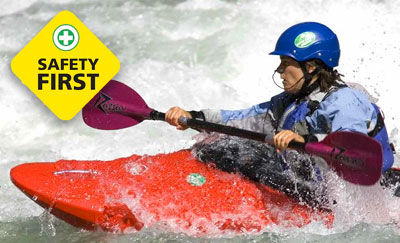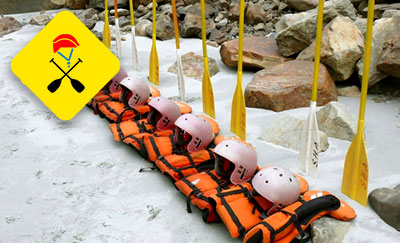About Rafter
River rafting or white water rafting in Rishikesh offers exciting adventure options for all abilities. No matter what age group you belong to, you can also choose a rapid grade that suits your specific requirements. All the 13 Ganges river rapids, stretching from Kaudiyala to Rishikesh have been categorized according to international scale of river difficulties. River rapids along the Ganges range from Grade I to Grade IV, the river difficulty increasing in the ascending order of grades. Whether it is a kid of 10 years or an adult of 65 years, Rishikesh rafting trip has something to offer everyone.
Beast Season for River Rafting in Rishikesh
The adventure of river rafting in Rishikesh welcomes you between Mid September and Mid June. The river and atmospheric temperature during Dec & Jan dip by 15-20 degrees, so fall in number of Rafting bookings can be seen during these 2 months. White water rafting is not available during the monsoon months of July and August, as the level and flowing current of water rises very high during this time. Best time for doing Ganga River Rafting is between February & June or September to November after monsoon.
River Difficulties & Grades
The best part about having a rafting experience in Rishikesh is that even non-swimmers, starters and kids can enjoy the fun. River Ganga offers you exciting rapids to raft along from Kaudiyala till Rishikesh. The rapids along the river have been categorized according to the international grading system. As per your individual preferences, you can select a grade and then enjoy the white water rafting experience along the thunderous rapids.
Basic (Rapid Grade I & II)
If you are a starter, kid or elderly, it is advisable for you to choose from Grade I and Grade II. These rapids are available at Brahmpuri and Club House. The rafting distance is around 9 km while the sailing time is around 1 hour.
Standard (Grade III)
Non-swimmers who are a little more adventurous can also go for the Grade III option. These rapids are located at Shivpuri & Marine Drive (Byasi). If you choose the standard grade ie. Shivpuri & Marine Drive, you get to enjoy rafting for 2 hours and 3 hours over a distance of 16 and 25 kms respectively.
Moderate (Grade IV)
The moderate rafting stretches are popular as Kaudiyala and Deoprayag. The total distance for rafting is 36 km in Kaudiyala and 70 km in Deoprayag. You get to enjoy rafting for around 4-5 hours in Kaudiyala and 10 hours in Deoprayag. Grade IV/IV+ rapid is "The Wall", which lies at Kaudiyala. If you are start on a rafting expedition from Deoprayag, you get to soak up the adventure of 10 hours of rafting and night stay at Ganga beach camp.
Listen To What The Guide Says
Rafting guides are outfitters are expertly trained in what to do and how to prepare for a specific rafting stretch or grade. Therefore, do not make the mistake of underestimating their expertise about the rafting techniques and river rapids. Listen to them properly and act as advised to enhance the joy of river rafting even more.
Techniques & Skills
If you are a starter, you may not be aware about the difference between a paddle and oar rafts. Rafting along the advanced level rapids, you may need to use techniques like jumping to the high side of the raft (highsiding), keeping the raft straight and riding the raft again if it capsizes. During a rafting expedition, you can easily learn all the basic techniques used during river rafting. However before your trip starts, there's a short briefing by Rafting guide/instructor.
Choose Age and Health-appropriate Rafting Trips
Whether it is young children, a senior citizen or someone aged in between, white water rafting can be enjoyed by all. It is always advisable to select a rafting stretch which matches your age. Even older kids may not be allowed to go along grade IV rapids. Likewise, some rafting stretches are restricted for senior citizens. Therefore, it is essential to choose rafting trips according to your age.
Keep the River Ganga clean
As a responsible traveller, it is the responsibility of all that we make minimal impacts on the environment and keep River Ganges free from pollution. All who have planned their river rafting adventure in Rishikesh and are heading to India are requested to contribute towards the mission of keeping the Ganga clean.
Various 'Keep the Ganges Clean' campaigns are being run across the country. Both government and non-government organizations are making efforts to keep the river free from pollution. The Indian government took the first step towards this cause through the Ganga Action Plan (GAP) in the year 1984. Most of the tasks under this plan were completed in 1991.
Polluted Ganga water affects the lives of many, particularly those who are dependent on the river. Those who are dependent on the river for their water supply fall prey to serious illnesses like hepatitis, typhoid, cholera etc. According to the WorldWatch Institute (Washington DC), every 8 out of 10 Indians suffer from waterborne stomach illnesses.













